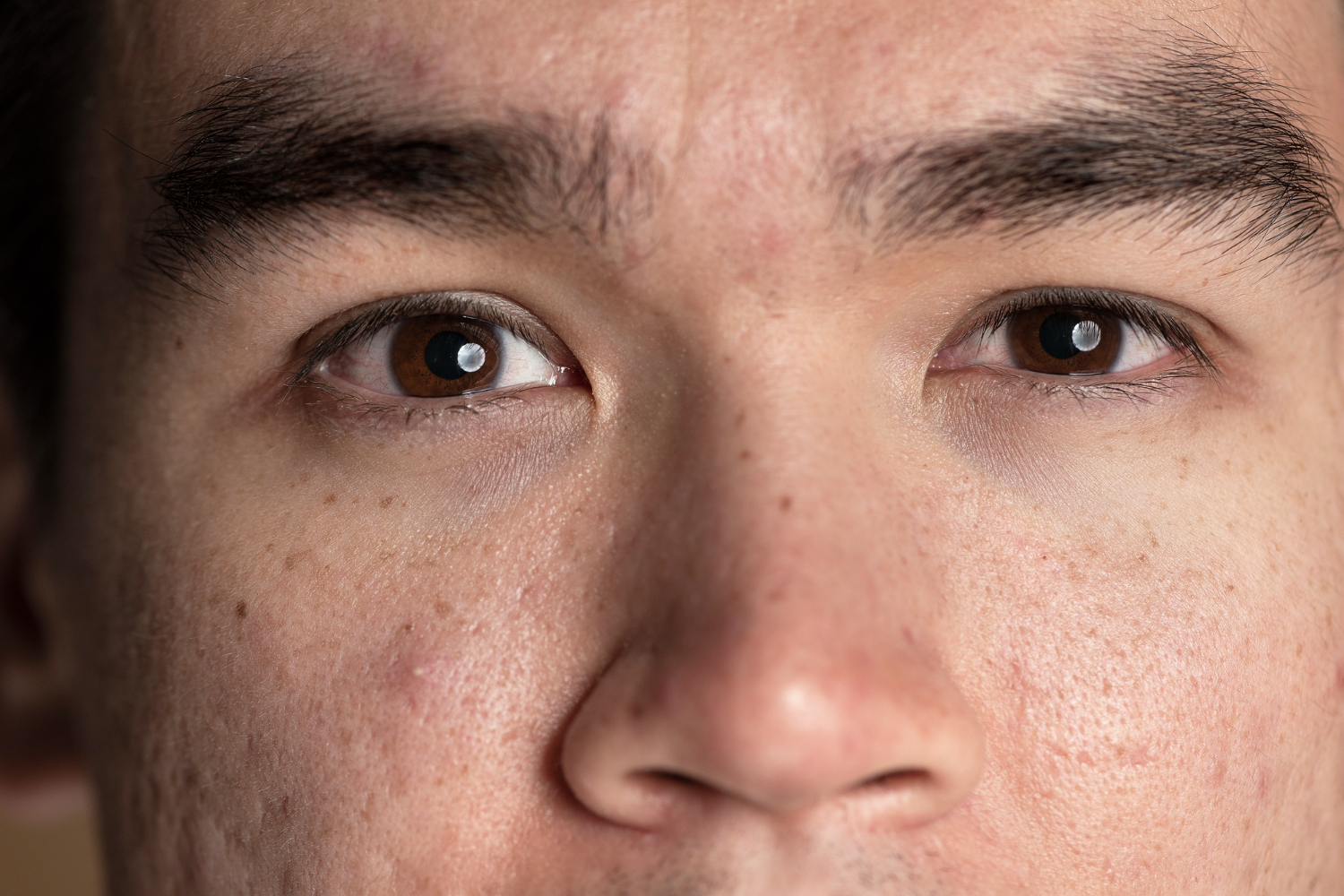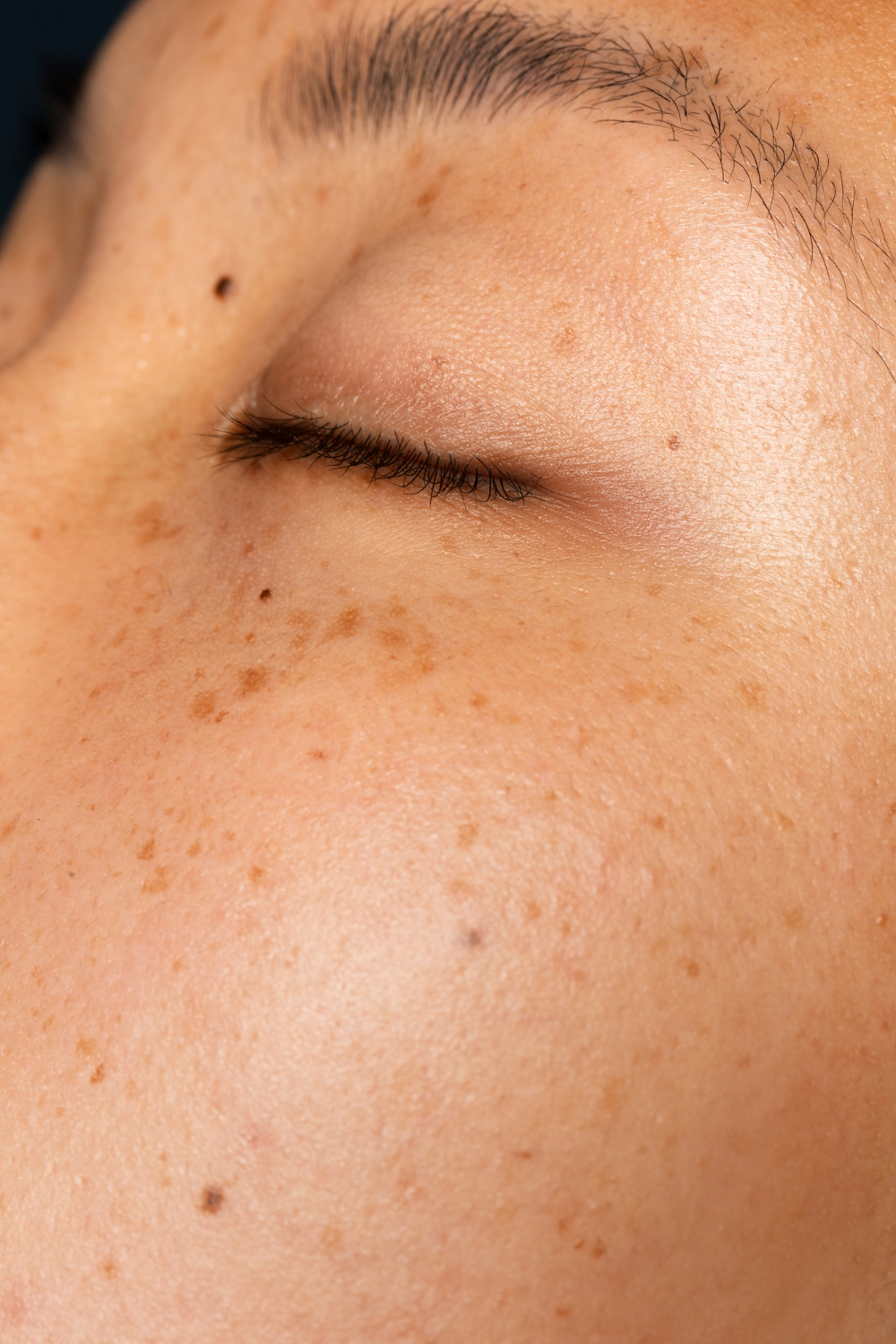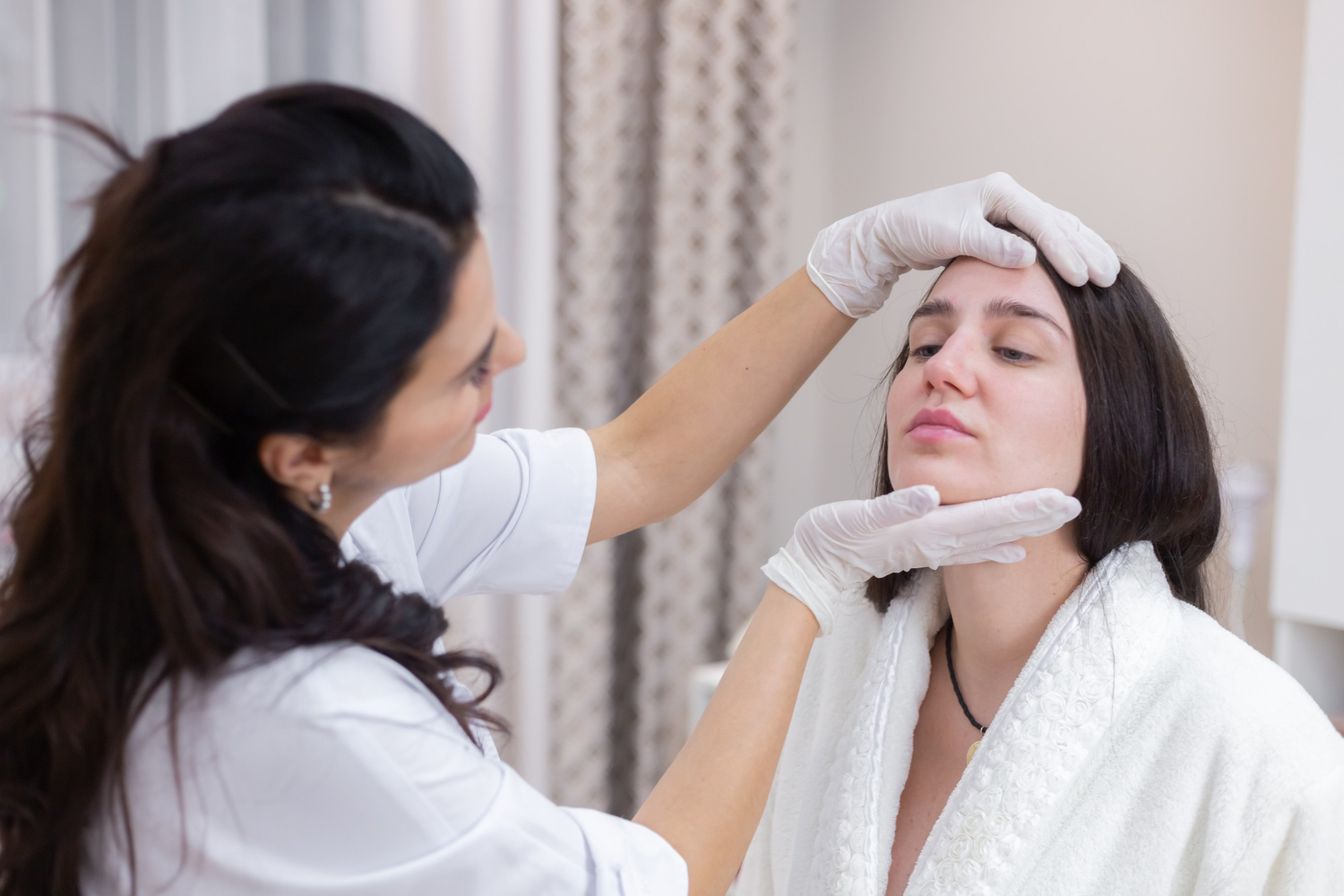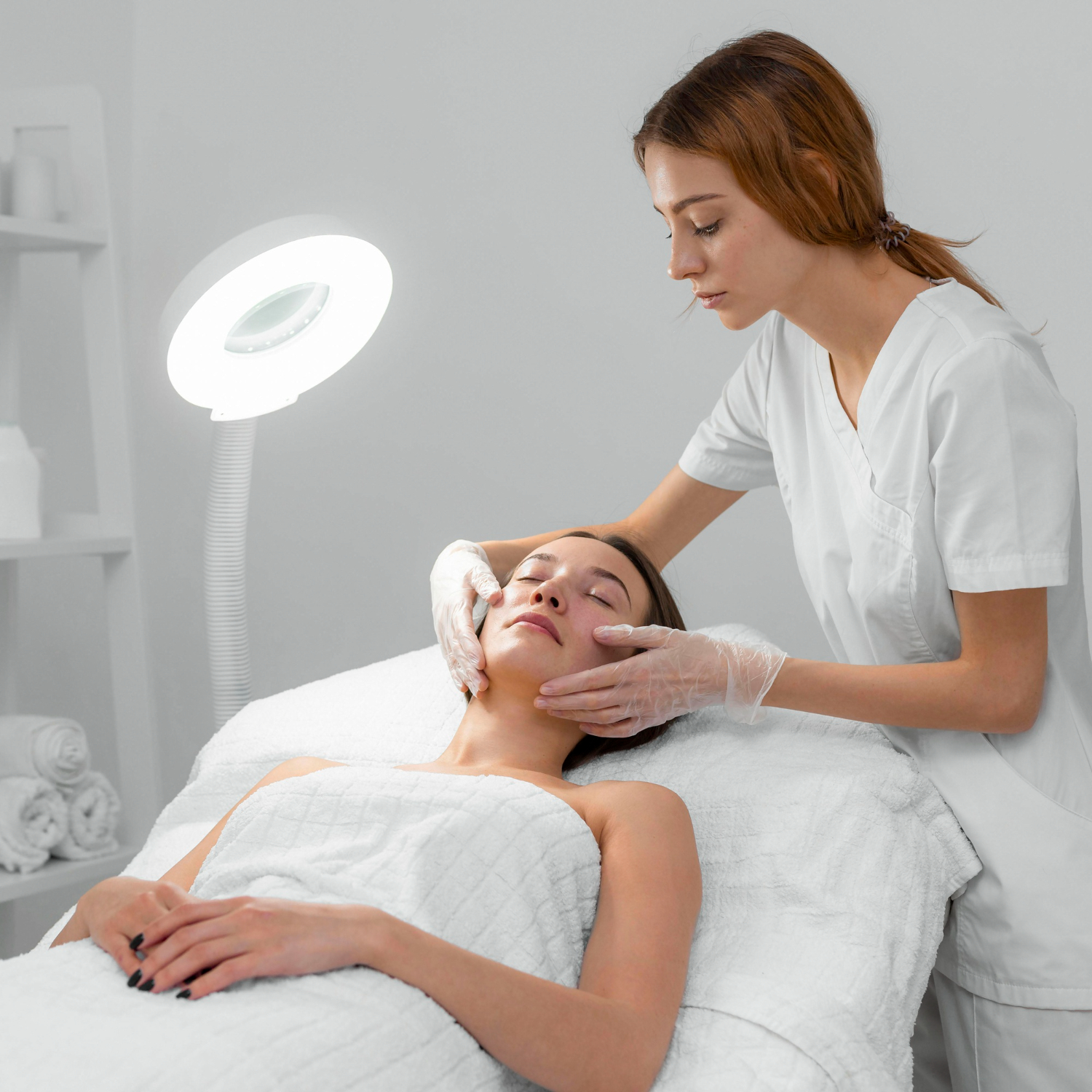
When it comes to our skin, it’s natural to be curious about unusual pigmentation or marks that appear over time. One such common concern is liver spots, also known as lentigo. In this blog post, our experts explain what liver spots are, the different causes of liver spots, and how to prevent them.
What are Liver Spots?
Liver spots, scientifically known as lentigines or lentigo, are small, flat, brown or black spots that commonly appear on the skin as we age. Despite their misleading name, liver spots have no direct connection to liver health or function. They are also called age spots or sunspots, as their development is primarily linked to sun exposure and the natural ageing process.
Liver Spot Causes: Who Can Get Liver Spots (Lentigo) on Skin?

Here are some key factors that may cause an increased risk of developing liver spots.
1. Age
Liver spots are most common in individuals over the age of fifty, but they can develop in younger people as well, especially if they have had significant sun exposure.
2. Sun Exposure
Prolonged and frequent exposure to the sun’s harmful ultraviolet (UV) rays is a primary contributor to the development of liver spots. This is why liver spots are often found on areas of the skin that are frequently exposed to the sun, such as the face, hands, shoulders, and arms.
3. Skin Type
Individuals with fair skin are more susceptible to developing liver spots than those with darker skin tones. Light-skinned people tend to have less melanin, the pigment that helps protect the skin from UV damage.
4. Genetics
Genetic predisposition can play a role in the development of liver spots. If your parents or grandparents had them, you may be more likely to get them too.
What are the Symptoms or Characteristics of Liver Spots?

While there are very few symptoms regarding liver spots, they typically have distinct characteristics that make them easy to identify, like the ones listed below.
1. Size
They are usually small, ranging from a few millimetres to about half an inch in diameter.
2. Colour
Liver spots are tan, brown, or black in colour. They can vary in shade and are typically darker than the surrounding skin. The most noticeable symptom of liver spots is the change in pigmentation on the skin. They appear as flat, discoloured areas and some may have lighter or darker liver spots than others.
3. Shape
Liver spots come in various sizes, usually ranging from a few millimetres to around half an inch in diameter. They are often round or oval in shape and have well-defined edges.
4. Texture
Unlike moles or other skin conditions, liver spots are typically smooth to the touch. They do not have any elevation or texture changes.
5. Location
Liver spots often appear on areas of the skin exposed to the sun, such as the face, hands, arms, shoulders, and upper back.
When to See a Doctor for Lentigo

While age spots are generally harmless and primarily a cosmetic concern, there are instances when you should consider consulting a doctor or dermatologist. Here are some situations in which seeking medical advice is recommended.
1. Change in Appearance
If you notice any significant changes in the appearance of your liver spots, such as a sudden increase in size, irregular borders, or a change in colour (especially darkening), it’s crucial to consult a healthcare professional. These changes could be indicative of a more serious skin condition, including skin cancer.
2. Pain or Itching
Liver spots themselves do not typically cause discomfort, pain, or itching. If you experience any of these symptoms of liver spots, it may be a sign of an underlying issue that requires medical attention.
3. Rapid Growth
If a spot appears to be growing rapidly or if you notice the sudden development of multiple new spots, this may warrant a visit to the doctor. Rapid changes can be a cause for concern and should be evaluated.
4. Skin Cancer Risk
If you have a history of skin cancer or are at a higher risk due to family history or excessive sun exposure, regular skin check-ups are essential. A dermatologist can monitor your skin for any unusual changes and provide guidance on prevention and early detection.
How are Liver Spots Diagnosed?

Diagnosing liver spots is usually straightforward and can often be done through a visual examination. However, if there are concerns about the spots or if they exhibit unusual characteristics, a dermatologist may perform a more thorough assessment.
1. Visual Examination
The primary method of diagnosing age spots is a visual examination by a healthcare professional, such as a dermatologist. They will inspect the skin’s surface to assess the size, colour, shape, and location of the spots. This examination helps rule out other skin conditions that may mimic the appearance of liver spots.
2. Patient History
Your doctor may ask about your medical history, including any prior skin conditions, sun exposure habits, and family history of skin disorders. This information can provide valuable context for the diagnosis.
3. Wood’s Lamp Examination
In some cases, a dermatologist may use a Wood’s lamp, a handheld ultraviolet light, to examine the spots more closely. This can help differentiate between liver spots and other pigmentation irregularities.
4. Biopsy (Rarely)
While it’s uncommon to perform a biopsy for liver spots, if there is any doubt about the diagnosis or if the spots appear atypical, a small skin biopsy may be conducted. During this procedure, a small sample of the affected skin is removed and sent to a laboratory for analysis to confirm the diagnosis and rule out any underlying skin conditions.
How Can I Prevent Liver Spots (Lentigo) on My Skin?

Preventing liver spots largely revolves around minimising the factors that contribute to their development. While some degree of skin ageing is inevitable, several proactive measures can help you reduce the risk of developing these pigmented spots.
1. Sun Protection
Protecting your skin from excessive sun exposure is the most effective way to prevent age spots. Apply a broad-spectrum sunscreen with an SPF of 30 or higher to all exposed skin, even on cloudy days. Reapply every two hours or after swimming or sweating. You may also wear protective clothing, such as wide-brimmed hats, long-sleeved shirts, and sunglasses when spending time outdoors. It’s also recommended to stay in the shade during peak sun hours, typically from 10 a.m. to 4 p.m.
2. Avoid Tanning Beds
Tanning beds emit UV radiation that can accelerate skin ageing and increase the risk of liver spots. It’s best to avoid them altogether.
3. Stay Hydrated
Proper hydration is essential for maintaining skin health. Drink plenty of water to keep your skin moisturised and supple.
4. Nutritious Diet
A balanced diet rich in antioxidants, vitamins, and minerals can support skin health. Incorporate fruits, vegetables, and foods high in antioxidants like vitamins C and E.
5. Topical Treatments
Some over-the-counter or prescription topical treatments contain ingredients like retinoids or hydroquinone, which may help prevent new spots from forming. Consult a dermatologist for guidance on using these products safely.
6. Gentle Skincare
Treat your skin gently to minimise irritation and damage. Avoid harsh scrubbing, and use mild cleansers and moisturisers appropriate for your skin type.
Takeaway
Remember that liver spots are primarily a result of cumulative sun exposure and the natural ageing process. While these preventive measures can reduce your risk, some degree of skin ageing is normal. Book an appointment at Bodycraft Clinic if you have concerns about existing liver spots or wish to explore skin treatment options for cosmetic reasons. Our dermatologists conduct a detailed examination of your skin and study your medical history in order to recommend any treatments for your skin.
FAQs around Liver Spots (Lentigo)
1. What do liver spots indicate?
Liver spots primarily indicate cumulative sun exposure and the natural ageing process of the skin. They are generally harmless and benign. However, any sudden changes in their appearance should be evaluated by a dermatologist, as they could be a sign of a more serious skin condition.
2. Can lentigo turn into melanoma?
Age spots typically do not transform into melanoma, a more aggressive form of skin cancer. It’s crucial to differentiate between the two. Melanoma usually appears as a rapidly changing, irregularly shaped mole or spot, while liver spots are generally flat, smooth, and have uniform borders. If you have concerns about any skin spots or notice changes, consult a dermatologist promptly for evaluation, as early detection is crucial for managing melanoma effectively.
